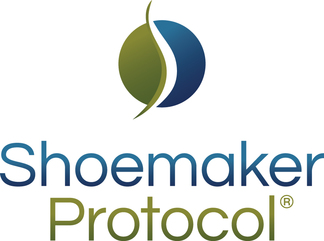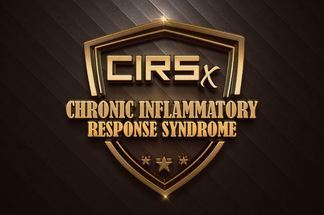As I See It- Lyme Disease and CIRS
Summary:The Lyme community has a desperate need for shared and organized data collection. Such a unified data base will enable patients to monitor step by step correction of multiple inflammatory parameters that underlie the bulk of their symptoms. The era of bitter arguments about use of antibiotics needs to give way to assessment of hard inflammatory data on actual cases that in turn will provide more precise case definitions. New studies, especially NeuroQuant testing, will provide a fingerprint of neurologic injury as well as providing an endpoint for targeted central nervous system therapies. Use of genomic testing for every day medical practice is almost here. This stunning new assessment of mRNA and microRNA will show us just how primitive our current understanding is as of today regarding the physiology of acute Lyme, treated Lyme and Post-Lyme syndrome. The data that will become the collated universal Lyme library will come from practitioners as opposed to academics who spend less time dealing with patient care issues. The academic support for patient management decisions must come from data-driven protocols that will correct CIRS. The days of the same old guesses about Lyme and co-infections, or guesses regarding denial of tick-borne illness have passed.
Some years ago, The University of Maryland School of Medicine published a paper on sites of incidence of Lyme disease in the Old Line State. The basic idea that reporting “Lyme by location” would tell us where Lyme was endemic was inherently bogus, as the authors made the unfounded assumption that the location of the Lyme report would correlate with the location of acquisition of the illness. As one might expect, the zip code with the biggest reporting of Lyme cases was 21851. For those not familiar with the flatlands and wetlands of the Eastern Shore of Maryland, that zip is Pocomoke, Md. The UM final report attempted to match hilly terrain with incidence of Lyme but the outlier; that being 21851, where my practice is located, was ignored. A hill in Pocomoke is defined as any area over 5 feet above sea level. We have just a few in Worcester County. If the UM boys bothered to include all data in their assessment of hilly terrain, their hypothesis would have simply flopped.
I’ve always said that if the data don’t fit the model, the model is wrong. The UM folks disagreed: they discounted the data. But who knows. Maybe they felt that since I saw patients from all over the Eastern Seaboard with positive objective Lyme tests (no, not using labs that are cash only) and wrote those patients up in peer reviewed journals that my data was already reported.
Early in my CIRS career, when I focused just on biologically produced neurotoxins, as soon as Dr. Sam Donta’s group patented their work in 1999 on the Bb toxin made by Lyme, I was off to the races treating inflammation in Lyme after antibiotics had done what they could. No wonder my anti-inflammatory protocols worked where denial of illness or attitudes like “antibiotics forever” didn’t. It was the toxin!
Well, maybe not. It is the innate immune inflammatory responses seen in Lyme that didn’t get better with antibiotics that showed the way. When the C4a, TGF beta-1 and T-regulatory cell abnormalities were fixed after the putative toxin aspect was corrected the patient could return to rebuilding a life. And we now know the genomics of Post-Lyme; the problem in Lyme is far more complicated that just the proteomics we have identified in the CIRS seen in Lyme patients. As a simple example, please see a sample of Lyme papers that look at some inflammatory and genetic markers in Post-Lyme and Lyme. Here, here, and here.
In Maryland, we are home to two of the most aggressive of the attackers of the ILADS group. I am not one of those two, though I did have great fun presenting three cases of Lyme at the Ratna Ling (California) conferences, successfully treated with CIRS protocols, to one of the aggressive infectious disease boys, cases in which he had seen the patients and failed to help. He ignored the ease of obtaining massive amounts of data on the CIRS of the patients that did not support his stereotypical conclusion of an emotional cause of the chronic illnesses. It is possible he felt angered by being confronted with his errors of omission and logic.
I was pleased when one of the biggest, baddest of all the Lyme devotees came for evaluation. Turns out she never had Lyme at all; as soon as her Stachybotrys-laden kitchen was cleaned out; mold, bacteria and inflammagens removed from her home; and she was treated with CIRS protocols, suddenly all those antibiotics must finally have worked. She still talks like she is an expert on Lyme! She now ignores massive amounts of information on mold that would actually make a difference to her colleagues in the Lyme community.
A shared theme here is intentional deletion of basic knowledge by both sides! What gives with these two sides of the Lyme issues that they argue about lab diagnosis, co-infections and antibiotic treatment without including all the necessary information needed to make good decisions to help sick people rid themselves of inflammatory anvils that drown them with disability and discouragement? Face it: Anyone who ignores a careful, thorough, rigorous and transparent differential diagnosis has no business trying to provide care or advice to chronically ill patients.
Especially since over 95% of the patients with symptoms that persist beyond antibiotics for confirmed Lyme have a genetic basis for their illness, as shown by HLA DR by PCR.
Basically, I would hope that the deleting anti-Lyme guy and the deleting pro-Lyme lady would be forced to listen to my 2-hour talk on inflammation in Lyme to be given on 3/15/2014 at the Lyme Round Table talks in Tampa. Pay attention, kids! You both are dead wrong. Your attitudes are harming people.
As I look back on the Lyme patients I have seen (over 1500) and tried to identify with antibody testing, so many didn’t have Lyme! And so many who were certain to not have Lyme actually did. What did actual cases all have? A physiologic basis for the Lyme diagnosis.
An analogy might help with my feelings about antibody testing. Imagine being on one of the hundreds of cop shows on US television. You find a pair of shoes in a suspect’s house. Each shoe has blood on it that matches the blood of the victim. You therefore have the murderer, right? Nope.
All the evidence proves is that the suspect’s shoes might have walked in the victim’s blood. That’s it.
Back in the days when four-fold rises of titers of antibodies or complement fixation testing between acute and convalescent status, we could conclude acute illnesses. A single antibody result in a five year history of chronic symptoms means precious little.
When we end up relying on antibody testing from one point in time from any lab (and let us all please stop opining about clinical diagnoses of Lyme in the absence of careful differential diagnosis and documentation of physiologic measures), what we can’t do is determine if the antibody means the person was affected at some time and is now sick (or not!) from that exposure. If the person received antibiotics before, the antibody titer almost never changes. We don’t know if presence of the antibody meant the illness was fought off by our combined innate and acquired immune responses or if the patient with antibodies is neurologically disabled by inflammatory excesses affecting distinct volumetric aspects of the CNS. That information will never come from an antibody test.
Even worse, we don’t really know if the antibody is truly monoclonal, meaning that only one kind of antigen (or degradation daughter of the antigen) set off one kind of antibody response. Using a polyclonal antibody renders any kind of specific analysis of the data impossible. And finally, sequential antibody testing has no basis in assessment of therapy. If there is a new tick bite or new rash, then I agree that searching for appearance of new bands (antibodies) makes sense.
Good luck, by the way, getting any lab to show how they proved their antibodies are monoclonal and therefore reliable! As an old lab jockey myself, I can assure you that claims for antibody specificity are often not supported by any extended challenges with a variety of similar but different epitopes.
Adding to the uncertainty about antibody testing is the problem of defective antigen presentation that has been well shown in Lyme for the classic “dreaded genotypes” of CIRS: 4-3-53 and 11-3-52B. If there is defective antigen presentation to B cells, guess what? No antibody! How then can absence of antibody production rule out Lyme when defective antigen presentation is a known critically important in at least 10% of people with the Post-Lyme syndrome (the other two most common HLA DR haplotypes are 15-6-51 and 16-5-51). Easy, just ignore the data. Both sides do.
Our group first presented HLA data after peer review in 2003, with confirmation in 2006 by investigators working independently.
And just to continue with the magnificence of genomics compared to clinical diagnosis, changes in cell surface markers CD 80 and 86 show how antigen recognition by antigen presenting cells is further impaired in cases compared to controls.
The Lyme literature is loaded with references to just about every kind of inflammatory marker but there is no systematic assessment of multiple inflammatory markers measured at one time and after each step of treatment! What is missing is the actual clinical data, collected by treating physicians according to an agreed-to protocol showing changes in these parameters with treatment with each new step showing what the old treatment did to inflammation. Clinical management needs to be transparent; a treatment protocol means that variations in approach, “because I felt it was necessary,” won’t cut it.
Said another way, “Lyme docs can hang together or surely they will hang separately.”
Just like in the mold world, where the anti-mold docs have never published any human data that refute the data on thousands of patients that has been published by numerous authors; don’t we expect the Lyme naysayers to show all of us (not just their political adversaries from ILADS) what the basis for their argument actually is? Don’t think that your opinion alone carries weight about entities without any objective parameters like fibromyalgia or malingering when there is clear inflammatory data available. Don’t delete the data!
As far as using symptoms to define Lyme, let’s go to New York City to hear the answer: fagetaboutit!
There are no differences among patients with Lyme, mold, cyanobacterial illness and dinoflagellate illness. It makes no difference to me if the CDC says Lyme is clinical diagnosis. They just don’t get it (or pardon me, maybe they are doing so on purpose?). The CDC/NIOSH “investigators” documented a multisystem, multisymptom illness in mold patients in their own study but then after confirming our group’s publications, much to their incredible chagrin, they famously (and shamefully) walked away without suggesting any treatment for anyone. Remember when the CDC grudgingly agreed to name the Pfiesteria illness of 1997 as Possible Estuarine Associated Illness (PEAS) but fell then flat by not showing that the entire grouping of symptoms of PEAS. And as far as cyanobacterial illness goes, even Florida, with its healthy budget for cyanobacterial work, has kept the lid on ongoing cases from Lake Apopka and Lake Griffin. Somehow, the cyanobacteria study our group did replete with symptom reporting and labs that was included in a 2005 EPA publication on this emerging health threat is ignored too.
So what about the neurologic and psychiatric issues in Lyme? Can we all agree that there is a lot of verbiage? As it turned out, the answers might have been in our laps since 2007 after the FDA cleared a volumetric software package called NeuroQuant for clinical use. In ten minutes of MRI time, without contrast, and for $96, we can show you a Lyme patient as shown by specific and distinctive changes in specific brain injuries. Show me a Lyme patient with a diagnosis of depression, anxiety, impairment of executive inhibition, intrusive thoughts, resting tremor, atypical seizure disorder (and more): based on today’s data, I’ll show you a Lyme fingerprint on NeuroQuant. As with any “new” procedure, we need more data but more than this reality, we need docs paying attention to inflammatory changes in CNS Lyme.
Similarly, in mold CIRS patients we can show its own unique NeuroQuant abnormalities, but the isolated atrophy of putamen seen in Lyme is in the caudate instead in mold people. The beauty of these findings is that we can now follow successful anti-inflammatory therapy with neuropeptides that will restore the inter-connections of Purkinje fibers, correcting isolated nuclear atrophy in grey matter of the CNS.
So how can Lyme docs obtain NeuroQuant data? Order the test. Need some help getting started with the reading? Fax it over. 410-957-3930.
How can Lyme docs obtain genomic data? For now, all they can do is to collect a PAXgene tube and store it for a couple of months until the test is out of “research use only.” But there is no reason to wait until later to start saving specimens according to steps of treatment.
What does the future hold?
I was looking at some of my posts from the Lyme list serve called Microbes and Mental Illness (mmi) the other day. Way back in 1999 I was asking for organized data collection on symptoms and labs in Lyme patients. There was some tepid enthusiasm for the idea but nothing ever happened. What the Lyme community could have done beginning back then was to show what is found in 20,000 Lyme patients. Sadly, the data collection never happened. And that is just a shame. For all the cash spent on countlessly repeated Western blots, imagine what resources could have been devoted to a data base to answer so many questions about Lyme and putative co-infections.
Having personally spent about five hours per week building data bases for 18 years the time involved gets to be a lot over 10,000 patients. But when someone has a legitimate research basis to ask about MMP9, I can ask them if they want 10,000 data points or just 5000, for example. When a doc says he would like to collect data but doesn’t have the time, my staff can show him how to work efficiently to run a practice and collate data too.
How many Lyme docs save frozen blood specimens from their patients? What questions can we try to answer by building a library of saved blood samples? And what questions can we try to answer by building and sharing bibliographies about pertinent subjects? How long does it take to do a literature search on PubMed these days? An hour? And then to write up the bibliography to have it in reach at a moments notice takes another hour or so.
How long does it take to collate lab results, make an Excel spread sheet to show T regulatory cell differences in Lyme and remove all personal health information? Maybe two hours. But just look at the rewards of having clear indication of where we are in correcting known T regulatory cell problems in Lyme that others have recognized but have no clue as to how to fix.
Why is this data important? Simple. If you don’t fix T regs the patient won’t be better.
And one more thing. If you read my first “As I see it” opinion piece about diagnosis, I basically expressed my intense concern that institutions have a built in bias that affects everything their practitioners might say about hot items in medicine. Sounds shrill doesn’t it?
OK, let’s follow that idea of shrillness. Do you think you will get a fair diagnosis of Post-Lyme from a Yale clinic? Do you want to see a doctor at Mayo for your unusual neurologic symptoms and a positive Igenex Western Blot? Do you already know what you will be told? Oh, and by the way, they won’t have any understanding of treatment of a mold patient there either.
Finally, please let this be the last day ever that a Lyme patient doesn’t know the HERTSMI-2 fungal DNA reporting of his home, workplace and school. I remain astounded how little Lyme patients as a rule actually know about moldy buildings. Having seen some clips from lectures given at Lyme conferences about mold I think it is time for actual data to take the place of speculation.
Welcome to world of mold and medicine at www.survivingmold.com. Let no assumption used to make conclusions go unchallenged and let all proclamations be held to the accountability of good research, good science, good medical practice, with integrity required for all.
Featured Resources for Community
The Surviving Mold Gift List
Give the precious gift of CIRS health & support with 10 gifts that keep on giving.
Shoemaker Protocol™ Quick Start:
The 3 initial steps to determine if mold is affecting you One of the most common questions we hear is, “how do I know if I have mold illness?” Rest assured, if you’re asking this question, you’ve come to the right place.
AirOasis The #1 CIRS Spring Cleaning Hack
Specialized air purifiers are revolutionizing deep cleaning, no matter the season. They’re a game changer for remediation purposes, too.
CIRS Spring Cleaning Checklist
Living with CIRS means cleaning and maintenance efforts must be ongoing and up to CIRS-safe standards. Spring is a perfect time to do a thorough examination and cleaning of the entire home and create a schedule for the year ahead.
CIRSX Annual Conference June 5-8, 2025 in Tempe, Arizona!
Early Bird Discount ends March 7!




